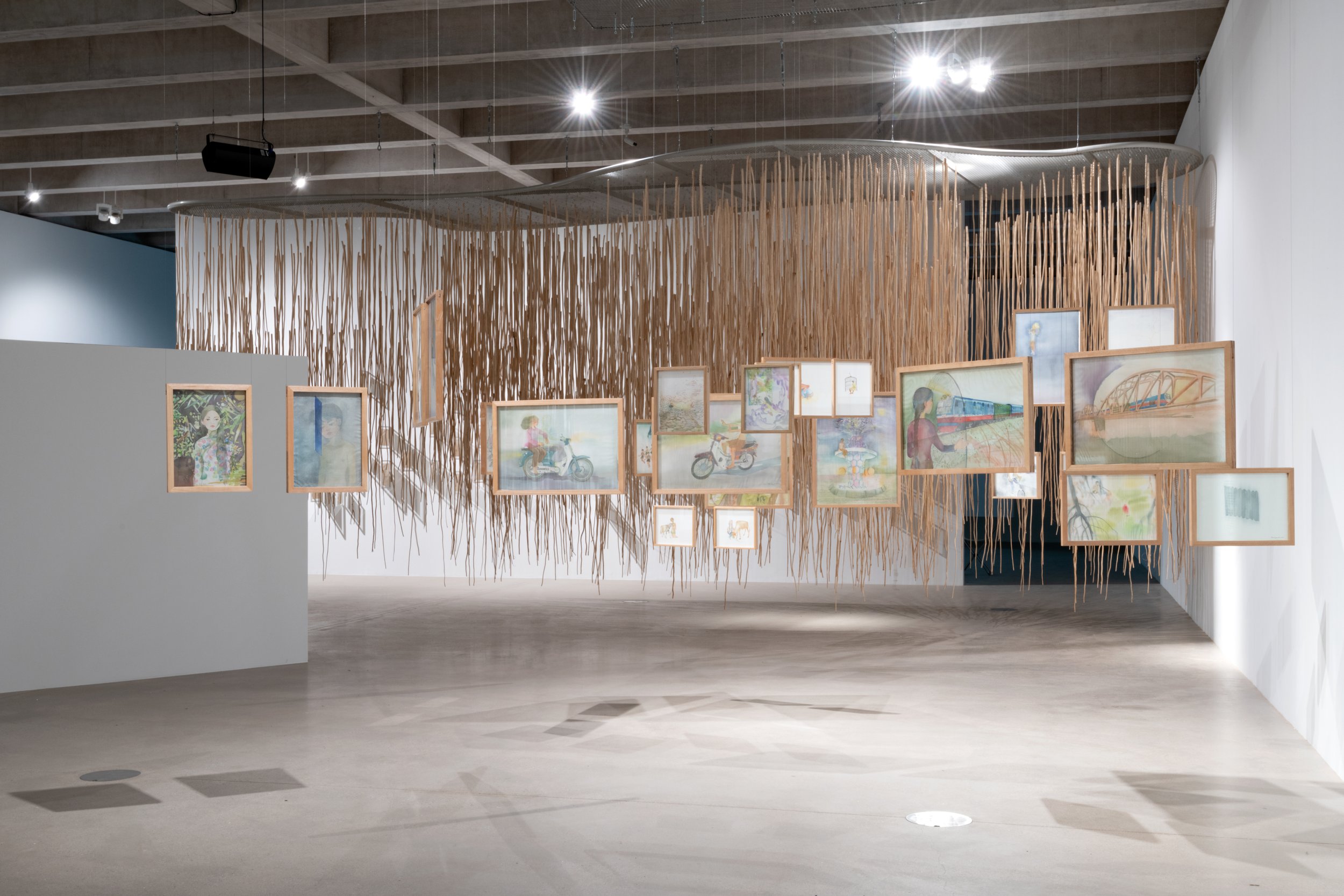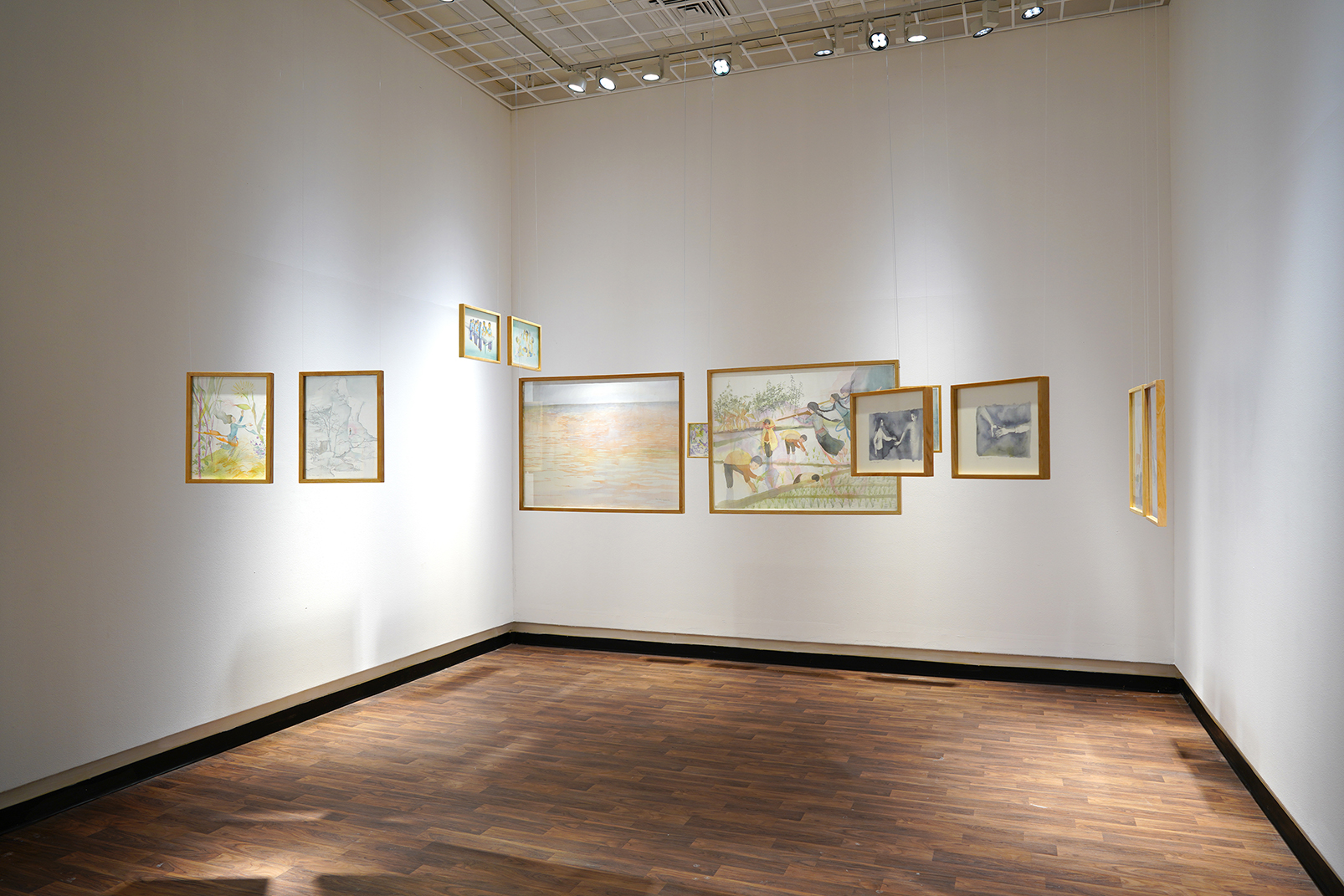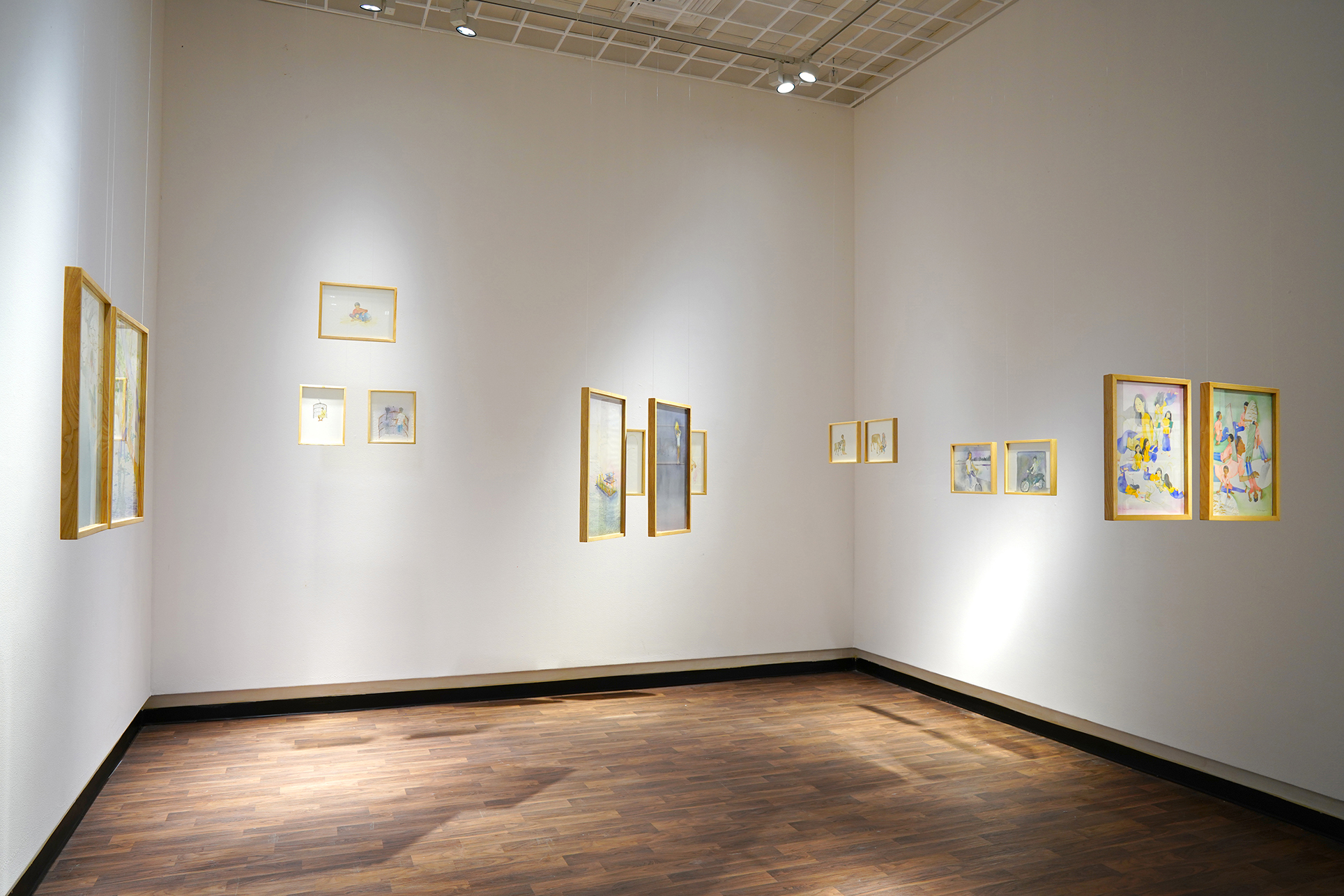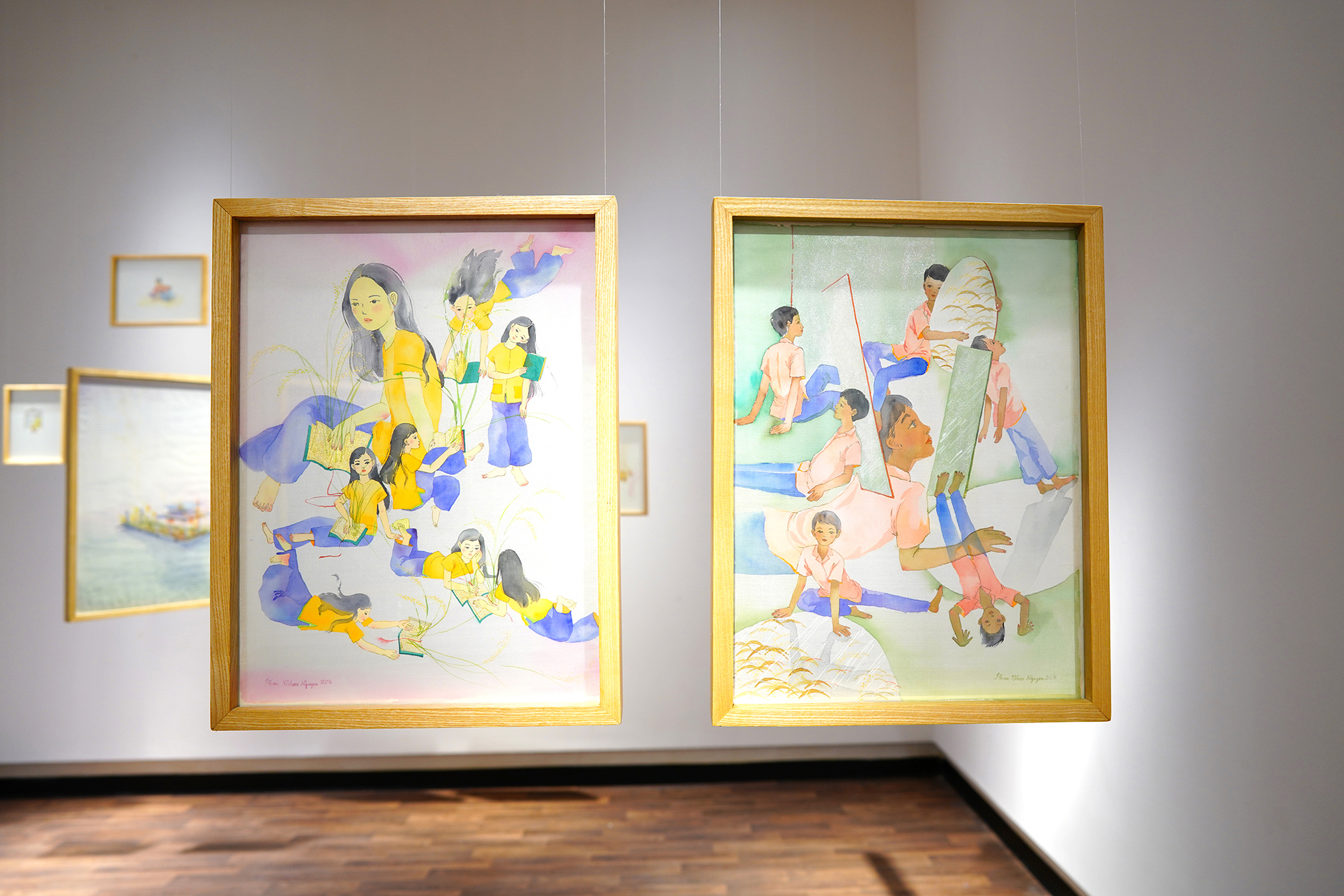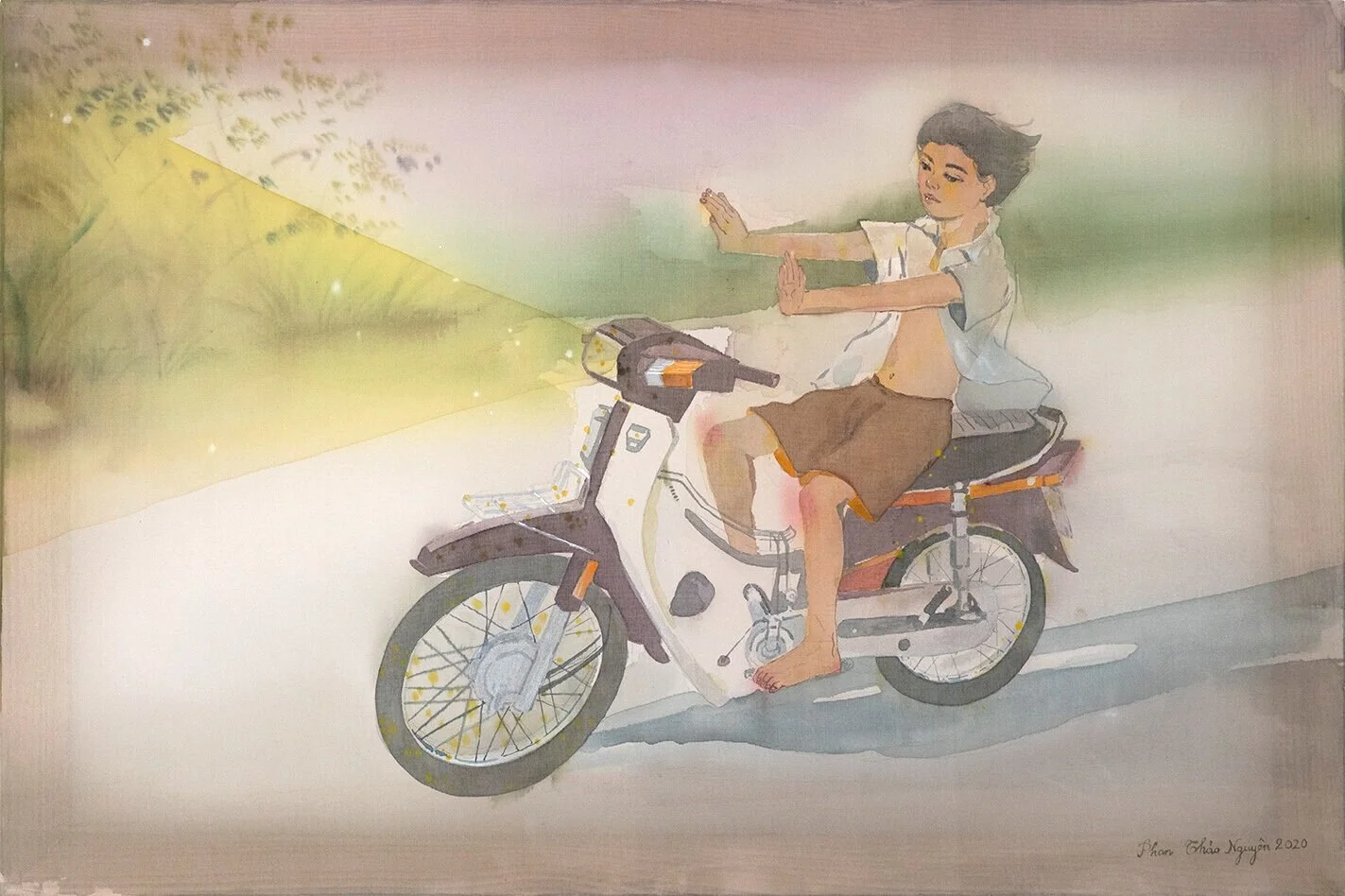Dream of March and August
2018-ongoing
Watercolours and pigment on natural silk, framed
Dimensions variable
Upon entering the exhibition space, spectators are to observe silk painting couplets of varied dimensions in the series “Dream of March and August”. The name is derived from the Vietnamese idiom, as simple and direct as it is: ‘March and August’. In the lunar calendar, these are the poorest months of the year, when the new harvest is not ready and the rice and other food saved from previous seasons has already ran out. March and August is a tenuous time in which farmers have to borrow money, rice and find other work to sustain their living. Vietnam, even though it is mainly an agricultural society, never produces quite enough food to sustain its population and it was not until the open-door policy in 1986, where trade and agriculture experienced a rapid development and industrialisation. March (Ba in Vietnamese) and August (Tám in Vietnamese) are also the names of the protagonists in the paintings.
I went on a quest along the dike systems of the Red River in search of evidence for the once widely circulated dictum in the Japanese occupation period, ‘Uproot rice, grow jute’, when the Japan administration forced local farmers to grow jute instead of rice to aid the escalation of war, one of the main causes of the devastating famine. Further and further along the journey, I found my hope dwindled as no jute plant ever came to sight, perhaps the growing of jute along Red River stopbanks had disappeared into oblivion in the same way the memories of the famine had done. As luck would have it, the futile search brought me to the house of an artisan silk weaver in Ha Nam province, whose expertise lay in making silk for painters. I fell for the charm of the delicate material, which was woven in a family of farmers in a traditional village. The strip of silk born bared semblance to the strip of the main river that had been nurturing the whole northern delta and its civilisations for thousands of years. The paintings in “Dream of March and August’ do not exist as singular pieces but rather are paired in ‘couplets’, similar to its literary namesake, each half the counterpoint to the other: disagreeing while supporting each other. The paintings depict the parallel worlds of March (Ba) and August (Tám), the main protagonists in this para-fictional environment. Ba and Tám are siblings, however, Tám died during the famine time, and became a hungry ghost. While Ba looks in vain for the memories of his sister, they somehow meet in a dream-like world impossible to reconcile in reality.
